The tokyo subway, locally known as “東京メトロ”, is a comprehensive underground transportation system serving the metropolis of Tokyo, Japan.
This metro system was inaugurated on 30 December 1927 with the Ginza line, marking the start of your operations.
However, Some sources erroneously cite the year 1885 as the opening date, which could be due to confusion with other transportation systems in Tokyo, or incorrect information transmitted through various unofficial means.
The Tokyo subway has 13 lines and 278 stations, covering a total of 312.4 kilometres (194 miles) of roads.
It is important to note that before the existence of the Tokyo subway as a formal entity, other tram and public transport services operated in Tokyo since the late 19th century, But the first underground service recognized as part of the current Metro system began in 1927.
The subway map
Below we show you the Tokyo subway map, We have it in several languages:
In language Japanese:
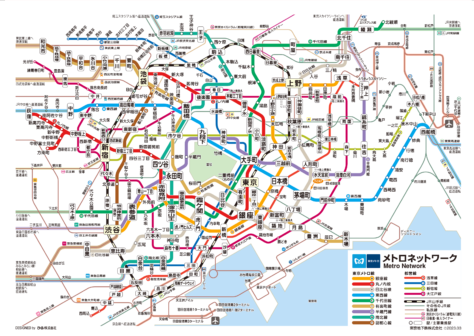
These are the same map of Tokyo as above (Japanese), but the following maps are available in language Chinese, Chinese Traditional and in Korean respectively:
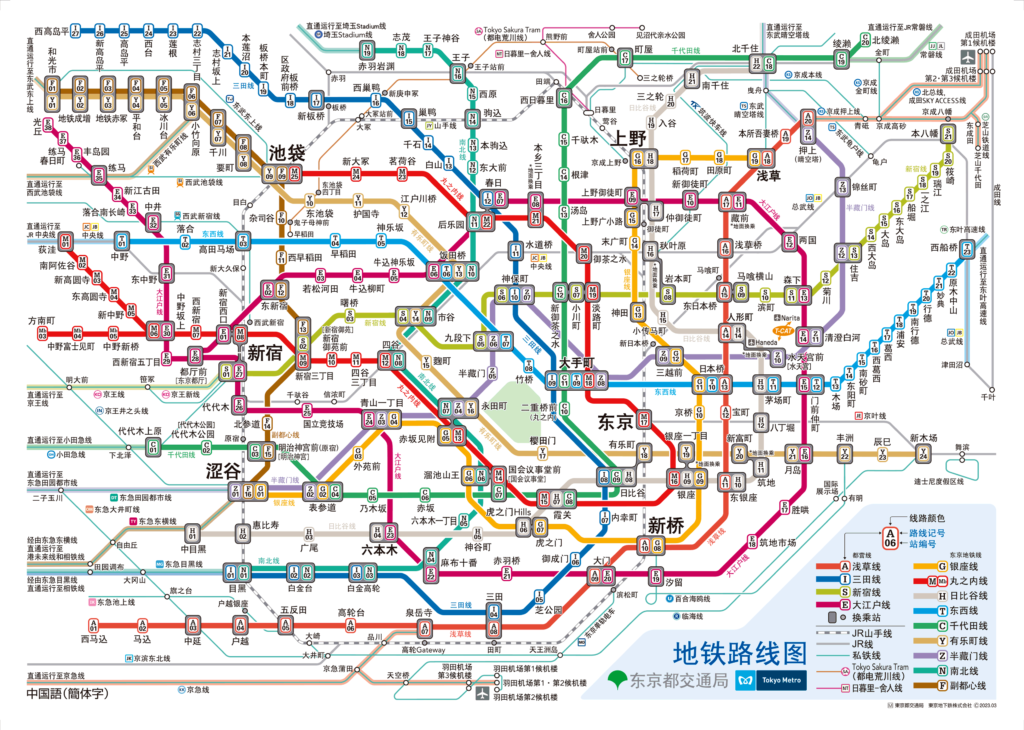
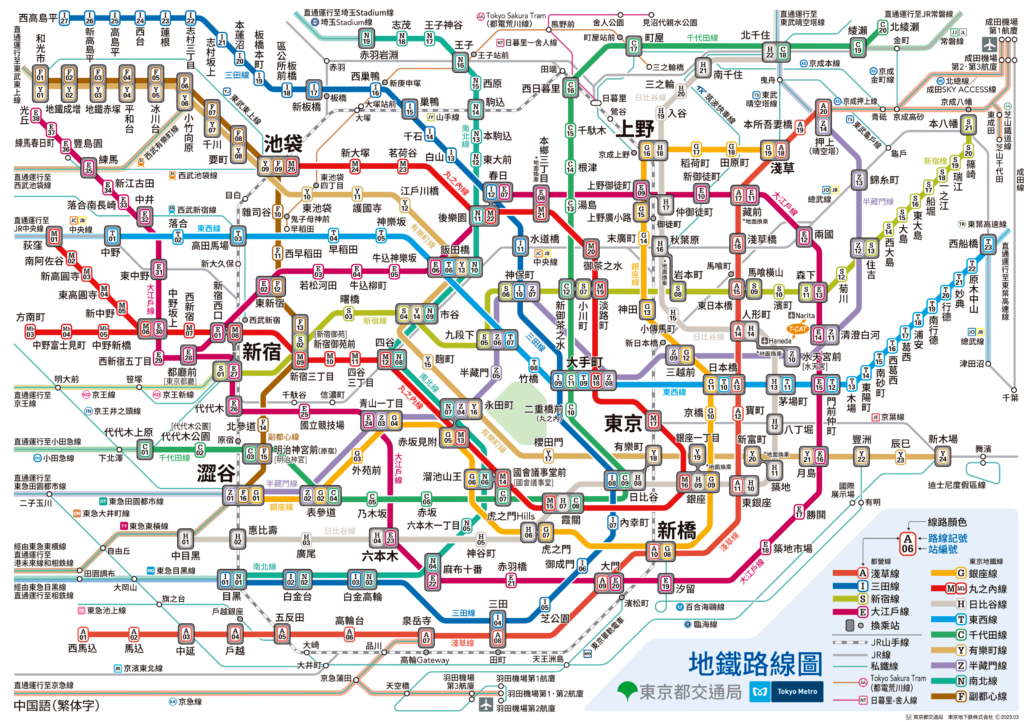
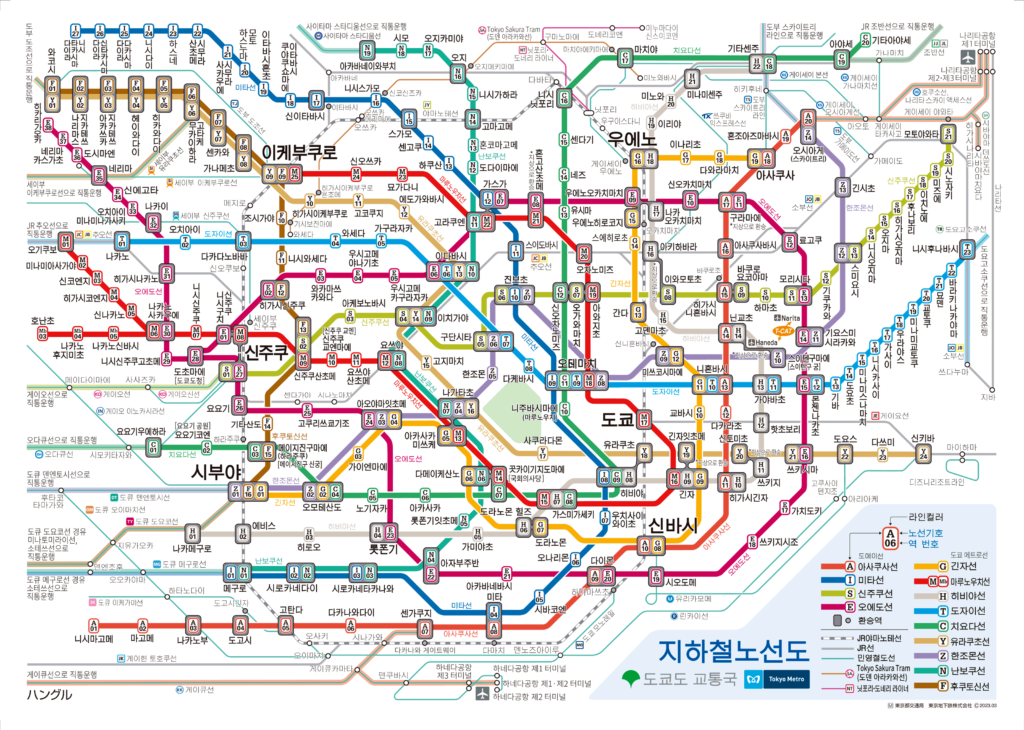
These are the maps in language English, First we have the “normal map“, and the second is the “Tourist Map” where the metro map appears with the main attractions marked:
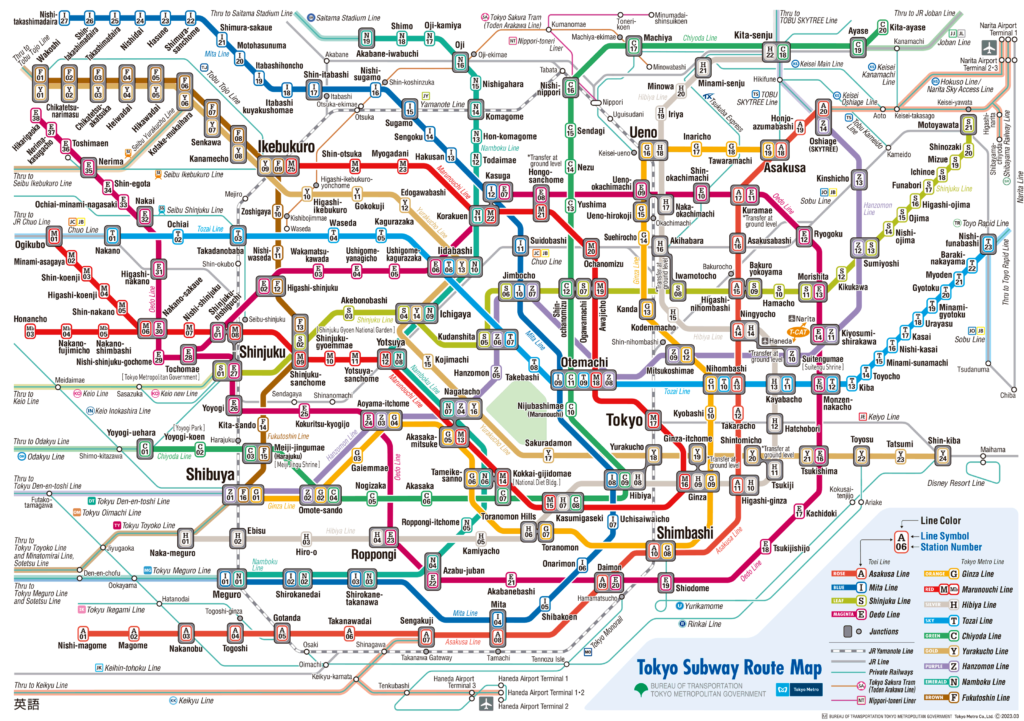
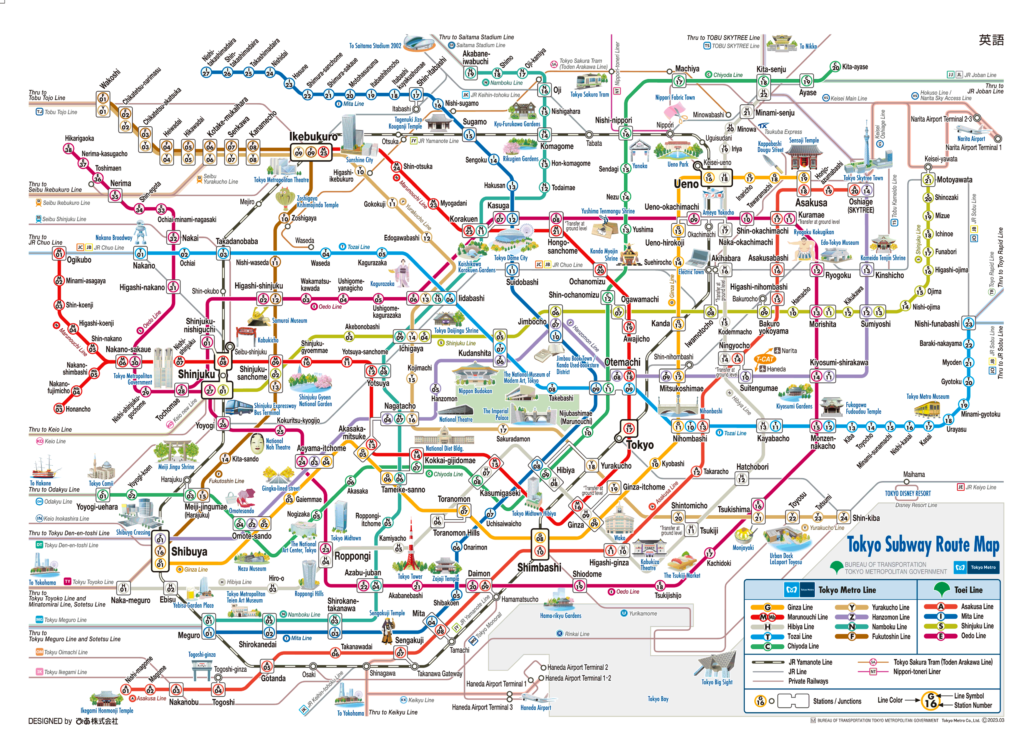
Below are the Tokyo subway maps in language Spanish, French y German, respectively:
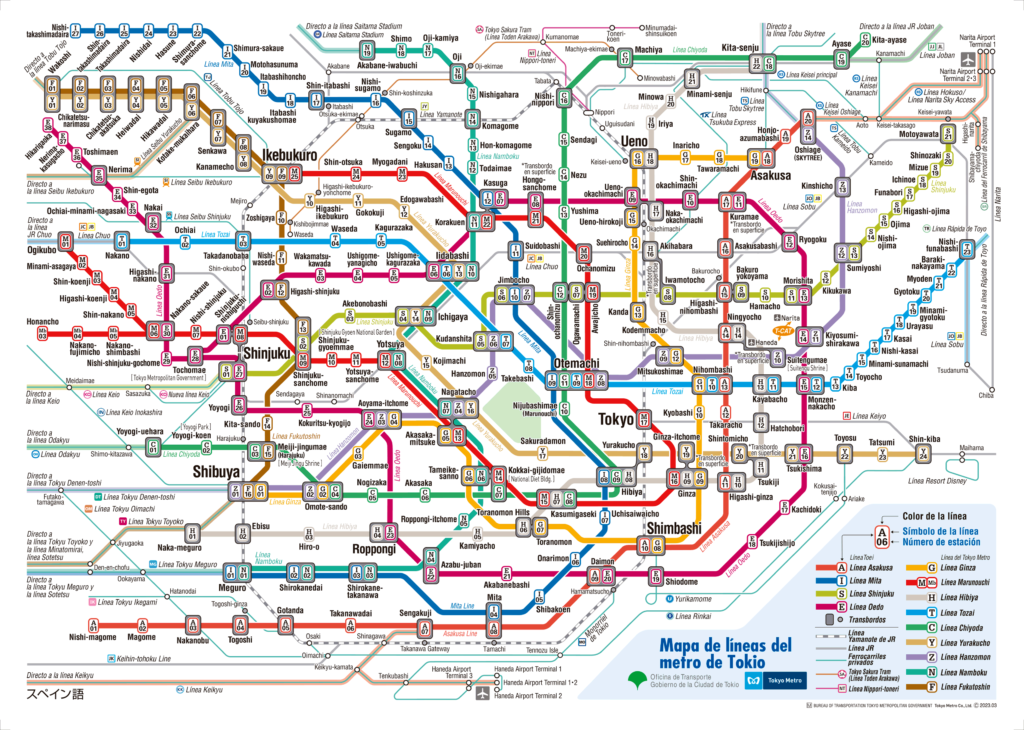
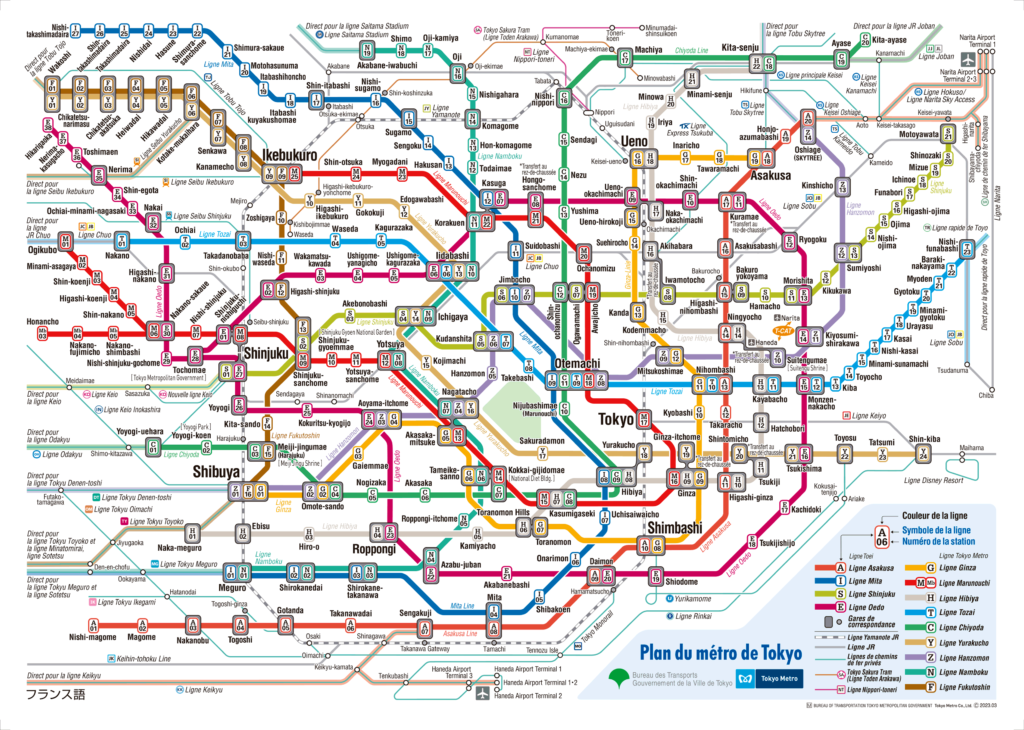
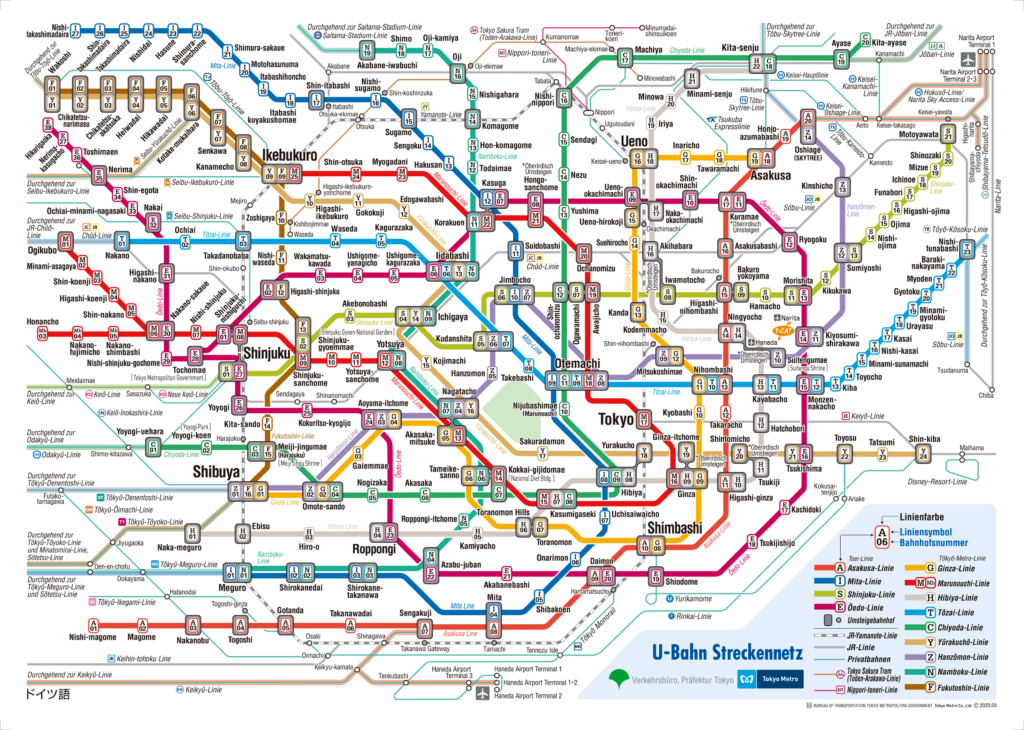
Tokyo subway schedules
Tokyo Subway service is available daily from 5:00 from morning to 1:00 am, thus guaranteeing a wide window of mobility for all types of activities.
Tokyo subway fares
Fares for traveling on the Tokyo subway are calculated based on the distance traveled, with prices that oscillate in a precise and structured manner to accommodate both short and long journeys within the metropolitan network. The current prices for regular tickets are as follows:
- Of 1 km a 6 km: 180 JPY (about 1.32 USD)
- Of 7 km a 11 km: 210 JPY (about 1.54 USD)
- Of 12 km a 19 km: 260 JPY (about 1.91 USD)
- Of 20 km a 27 km: 300 JPY (about 2.20 USD)
- Of 28 km a 40 km: 330 JPY (about 2.42 USD)
These prices reflect a full service fee that includes a contribution of 10 JPY for Station Accessibility Improvements, ensuring that the transportation system is accessible to all. For children, Fares are about half the adult price. Besides, passengers can enjoy slightly reduced fares when using IC cards such as PASMO or SUICA, which offer convenience and efficiency when traveling.
Official Web site
- For more information, visit the tokyo subway official site.
- To see all all Tokyo tourist attractions and shows, the Tiqets website is the most useful, It is available in several languages and allows you to buy cheaper tickets online.
History of the subway

Tokyo subway, One of the most advanced and extensive public transport systems in the world, started operations in 1927 with the inauguration of the Ginza line, connecting Ueno and Asakusa stations.
Although it is sometimes mentioned that it started in the year 1885, this year is more likely to mark the start of regular rail services in Japan, the metro itself began in the 20th century. Since then, The Tokyo subway has grown to encompass multiple lines operated by different companies, including Tokyo Metro and Toei Subway.
The expansion of the system has occurred in parallel with the growth of the city, reflecting and adapting to the transport needs of an ever-evolving metropolis.
In the decade of 1950, The Tokyo subway began to expand rapidly, and the network was designed to facilitate mobility during the Tokyo Olympics 1964, an event that marked a significant moment in Japan's post-war modernization and globalization.
The last major expansion took place in 2020, with the inauguration of new stations and the extension of existing lines, which further improved connectivity within the city and its suburbs.
Tokyo Subway Map History
The original design of the Tokyo subway map has been significantly transformed over the years from the first line to 1927.
In the early decades, The map was quite functional with a straightforward style and without many frills, Similar to many other subway systems of the time. However, As the network expanded, The need for a more integrated and easy-to-understand design became apparent.
One of the most important design changes, occurred in the decade of 1990, when a more colorful style was introduced with better visual differentiation between the lines.
Designers such as Nobuyuki Sirasuna have played a crucial role in these developments, incorporating universal design principles to ensure that the map is accessible to all, including visually impaired people or those unfamiliar with Japanese.
The current design of the Tokyo subway map stands out for its clarity and efficient use of color and typography, features that make it easy to read quickly and help users identify their routes efficiently on one of the world's busiest subway systems.
Additional data
The Tokyo subway is much more than a means of transportation; it's a vehicle for exploring some of Tokyo's most iconic and touristy sites. Here are some notable points of interest and their corresponding stations:
- Senso-ji Temple (Asakusa Station, Ginza Line): This station offers direct access to Senso-ji Temple, the oldest in Tokyo, known for its iconic Kaminarimon Gate, which is one of the most recognizable images of the city.
- Shibuya Crossing (Shibuya Station, Ginza Lines, Hanzomon and Fukutoshin): Known worldwide for being one of the busiest crosswalks, Shibuya is a major center of youth activity, Fashion & Entertainment.
- Imperial Palace (Otemachi Station, Chiyoda Lines, Marunouchi, Tozai, Hanzomon and Mita): Otemachi offers a convenient route to the Imperial Palace, where you can explore the sprawling gardens and historic architecture.
- Tokyo Tower (Kamiyacho Station, Hibiya Line): From this station, Tokyo Tower is easy to get to, from where you can get breathtaking panoramic views of the metropolis.
- Akihabara (Akihabara Station, Hibiya lines, Chuo-Sobu and Yamanote): This neighborhood is the heart of otaku culture with its many electronics stores, Video games, Manga & Anime.